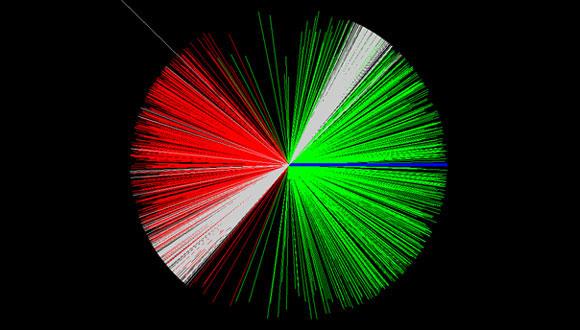Joint Seminar in Nuclear Physics
PROGRAM
14:30 - 14:45 Refreshments
14:45 - 15:45 "The long half-life of 14C, causes and implications", Walter Kutschera (Vienna Environmental Research Accelerator (VERA)
Abstract:
The half-life of 14C is 5700 ± 30 years, which makes it particularly useful for dating in archaeology and many other fields. However, only an exceptional hindrance of the beta decay from 14C to 14N – a so-called Gamow-Teller ß-decay – makes this half-life so long. A “normal” strength of this kind of decay – as observed in neighboring nuclei and expressed by the so-called Log ft value - would result in a half-life of only a few days, completely useless for archaeological dating [1]. To explain this hindrance from first principles has been a challenge for nuclear theory since many years. Recently, nuclear model calculation with great computational efforts have been performed in the literature to reproduce the very low transition probability [2]. It seems that the nuclear structure of the two nuclei is so different that the beta decay requires a rearrangement of all nucleons, leading to a strongly destructive interference phenomenon. The current understanding of this situation will be discussed.
While the long half-life is useful for dating during the last 50,000 years, 14C as a byproduct of the above-ground nuclear weapons testing from 1950 to 1963 provided a quasi-stable isotope label of atmospheric CO2. The rapid distribution of this excess 14C through the CO2 cycle after the nuclear test ban treaty of 1963 produced the so-called 14C bomb peak allowing a variety of unique investigations. Some examples will be presented.
[1] W. Kutschera, The half-life of 14C – why is it so long?, Radiocarbon (2019), in print [2] P. Maris et al., Origin of the anomalous long lifetime of 14C, Phys. Rev. Lett. 106 (2011) 202502.
15:45 - 16:15 Coffee Break
16:15 - 17:15 "Measurements of Polarization-Transfer to Bound Protons at the Mainz Microtron", Paul Sebouh, TAU
Abstract:
A comparison of the polarization-transfer to a bound proton in quasi-free kinematics to that of elastic scattering off a free proton can provide information on the characteristics of the bound proton. In elastic scattering, the ratio of the transverse (Px) to longitudinal (Pz) polarization-transfer components is proportional to the electromagnetic form factor ratio GE/GM. This provides a direct measurement of the form factor (FF) ratio and eliminates many systematic uncertainties. Similar measurements in quasi-elastic scattering off bound protons have been performed at the Mainz Microtron (MAMI) on 2H and 12C, with momentum transfer Q2 up to 0.65 (GeV/c)2, in order to search for possible modifications to the FF ratio. We observe that the deviations in the measured ratios Px/Pz from those of free-proton scattering have a similar dependence on virtuality (off-shellness) for different nuclei, at a wide range of kinematic settings, implying a universal behavior, and that the same mechanism causes the deviations in each type of nucleus.
This talk will explain the setup of the experiment, the methods used to derive Px, Pz and their ratio, as well as the calculated predictions that they are compared to. I will also present the ratios of the measured polarization observables to those expected for elastic scattering of a free moving proton.


